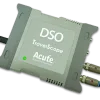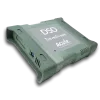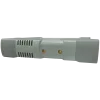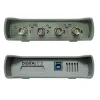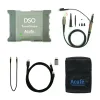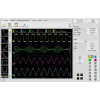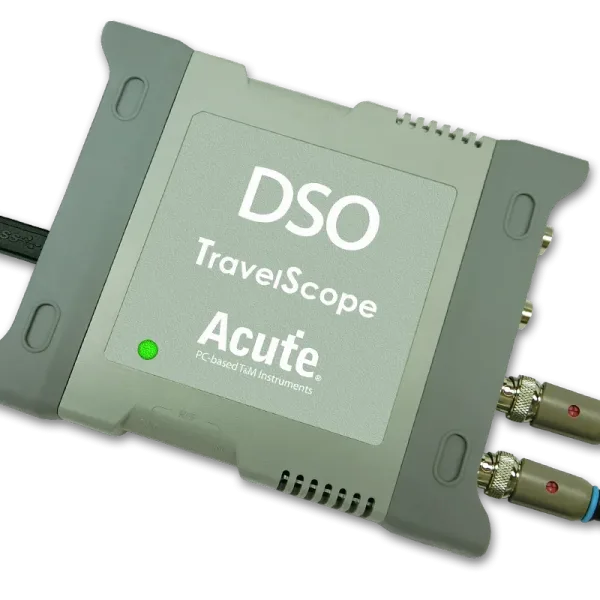
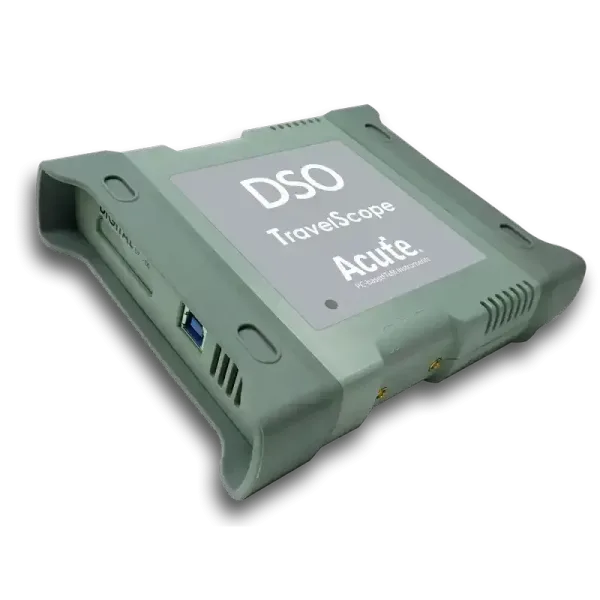
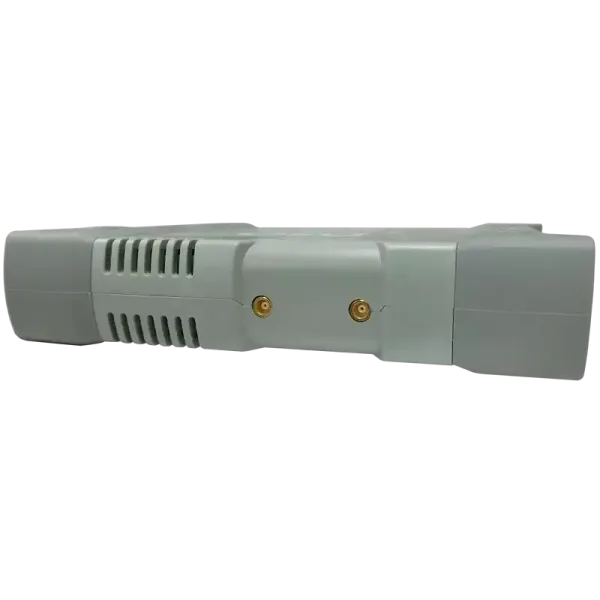
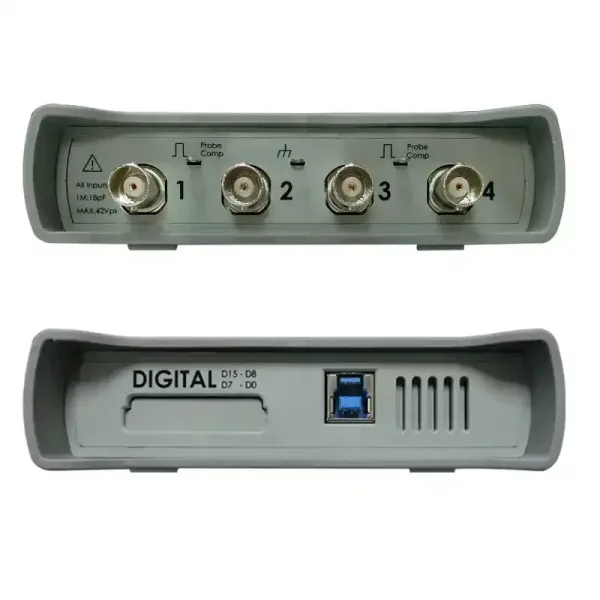
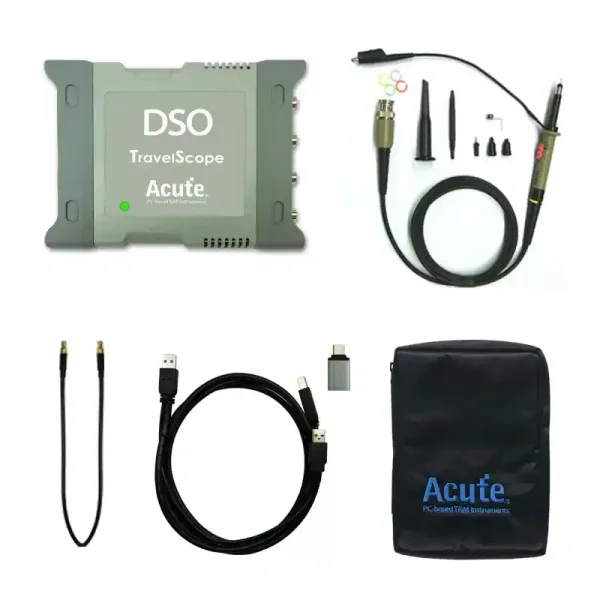
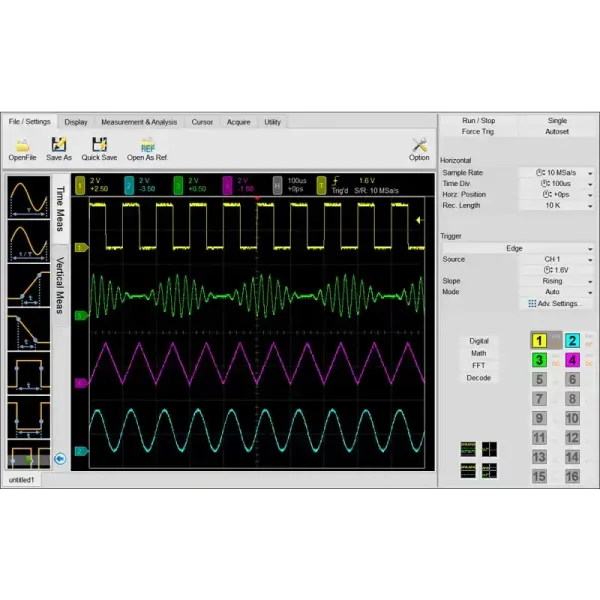
TS3124H DSO
TravelScope DSO
- PC-based, USB3.0 interface / powered (Type-A / Type-C)
- Record length : 128Mpts/ch
- Channel:4
- Sample rate:1 GS/s
- Bandwidth:200 MHz
- Data Logger (HDD / SSD Storage)
- Digital Voltmeter:3 digits
- Frequency Counter:5 digits
TS3000 series DSO is compact and portable, making it suitable for on-site testing. It also offers resources for secondary development.
TS3000 uses a USB 3.0 interface for power, enabling high-speed data transmission and eliminating the need for complicated power connections, making it easy to use. The TS3000 has 4 channels, a sampling rate of 1 GS/s, and a bandwidth of 200 MHz. Each channel has a record length of 128Mpts. In addition, the TS3000 also provides a 3-digit digital multimeter and a 5-digit frequency counter, allowing it to handle multiple signals simultaneously for monitoring and analysis. Whether you are in electronic testing, communications, or embedded system development, it offers outstanding and accurate signal analysis capabilities.
TS3124H features a 16-bit high resolution and oscilloscope stacking capability, allowing it to capture very subtle signal variations, making it suitable for high-precision measurements and analysis. The oscilloscope stacking function simultaneously displays multiple waveforms, facilitating signal comparison and analysis. This is particularly helpful for comparing waveforms at different time points or from different channels.
TS3124H is designed with a user-friendly software interface, making operation and configuration straightforward and intuitive. Even users unfamiliar with oscilloscopes can easily get started.
Functions:
Multiple Devices Stack Mode
Support DSO stack mode, up to 4 devices (16 channels) can be stacked together in the same time.
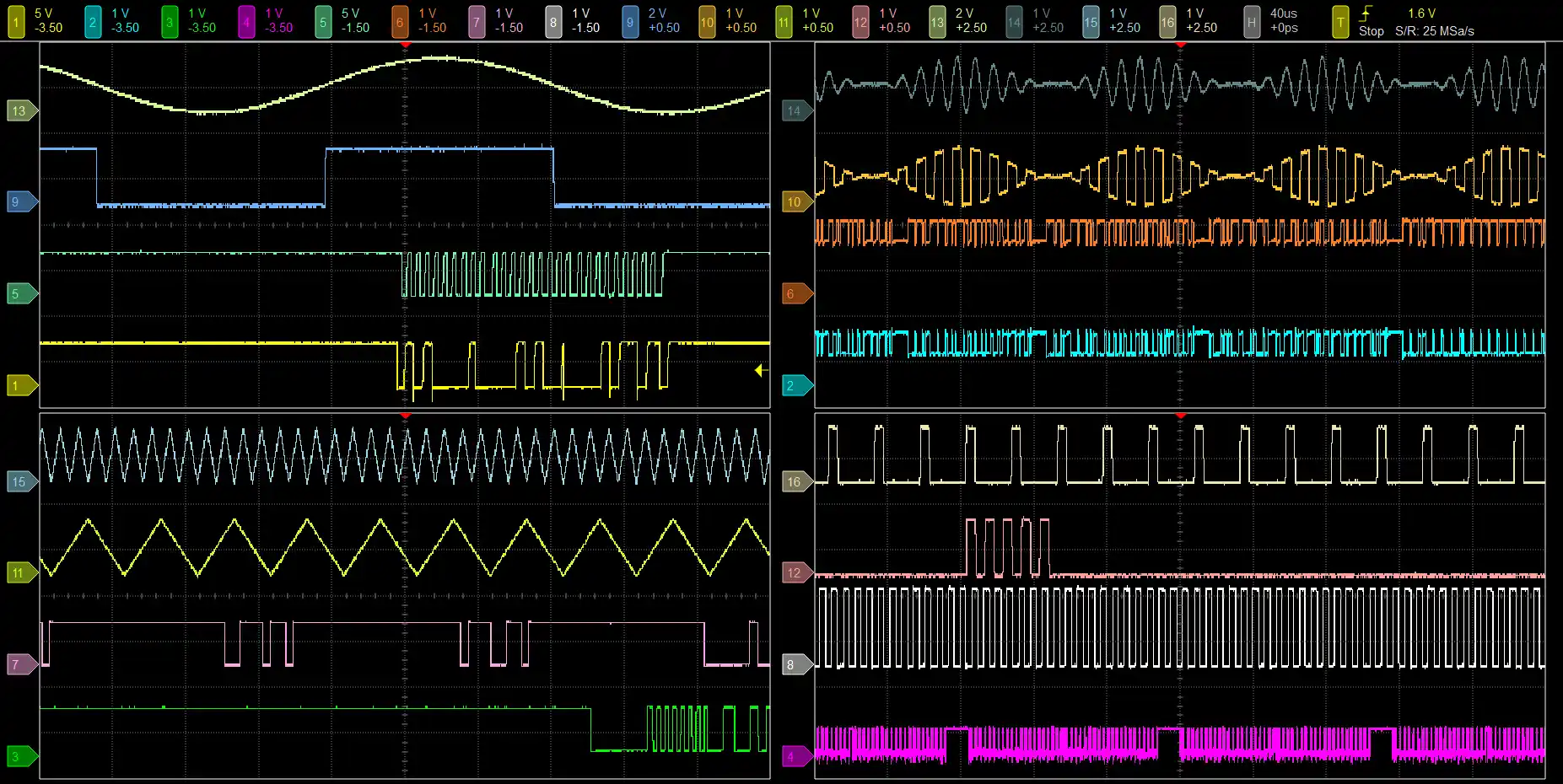
Protocol Decode & Trigger Function
Provides, CAN/CAN-FD, I²C, LIN, MIPI I3C 1.1, ProfiBus, SPI, UART(RS232), USB1.1,… protocol decode and trigger function, which is able to trigger and decode on the specified Command/Address/Data…
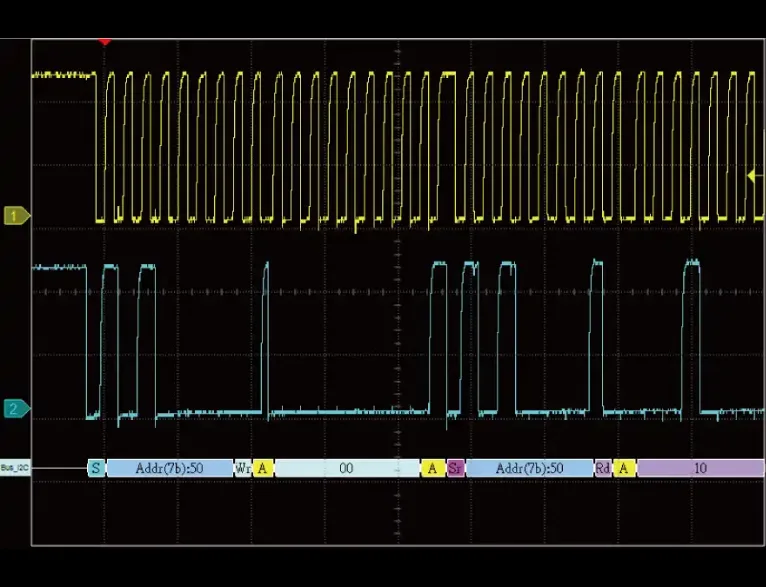
Decode the I2C waveforms
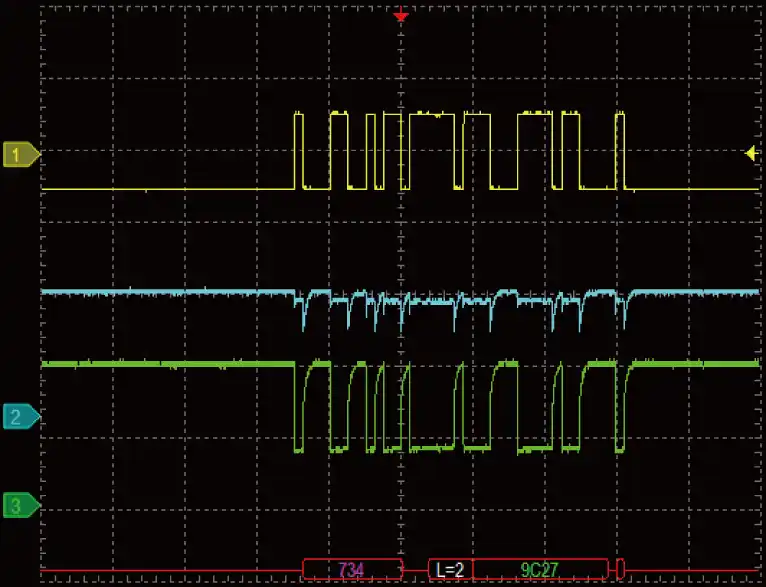
Decode the differential CAN signals with a differential probe. (CH1: Differential Probe, CH2: CAN H, CH3: CAN L)
※ Supports CAN-FD, CAN2.0
Runt Trigger – Positive Runt
Use 2 voltage thresholds and pulse width to trigger on either/ ±runt signals.
Runt Trigger – Negative Runt
Timeout Trigger
Trigger when no pulse is detected within a specified time, range from 2ns to 50s.
Width Trigger
Pulse width range from 8ns to 50s.
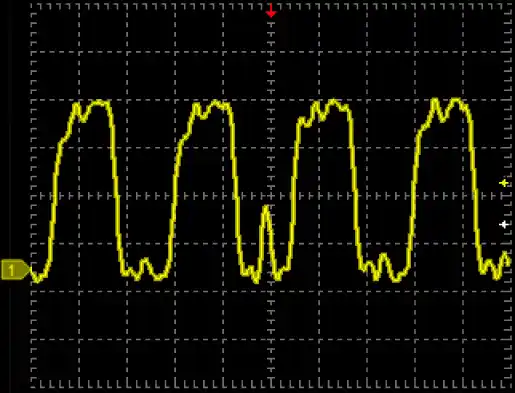
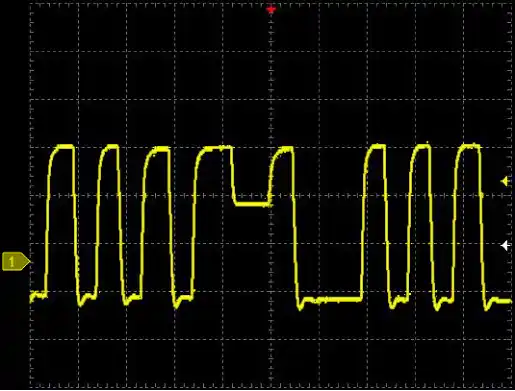
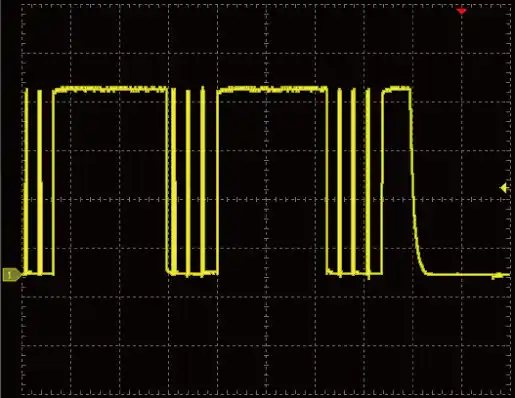
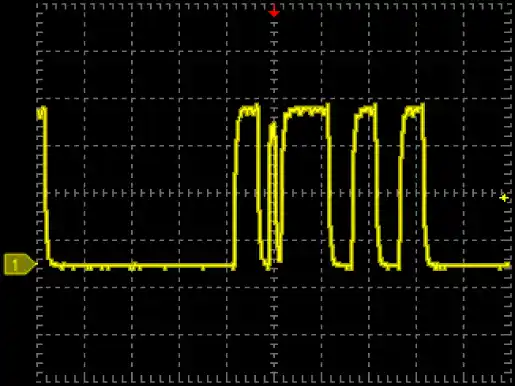
Multiple Windows
Multiple Window feature provides 4 display types (1×1, 2×1, 1×2, 2×2), which could displays 16 channels in maximum 4 different windows, provides clear waveform readability without lower the vertical resolution.
Spectrum analysis (Fast Fourier transform, FFT)
Apply FFT to the selected channel.
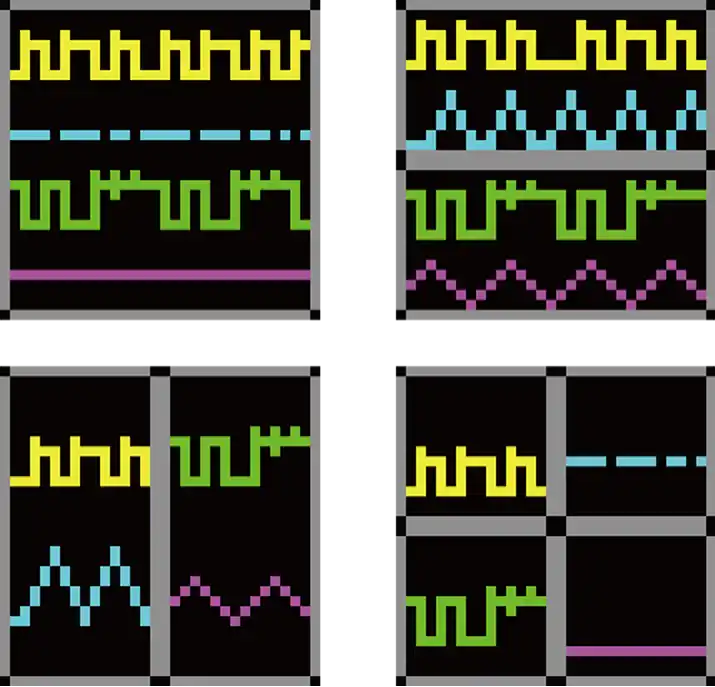
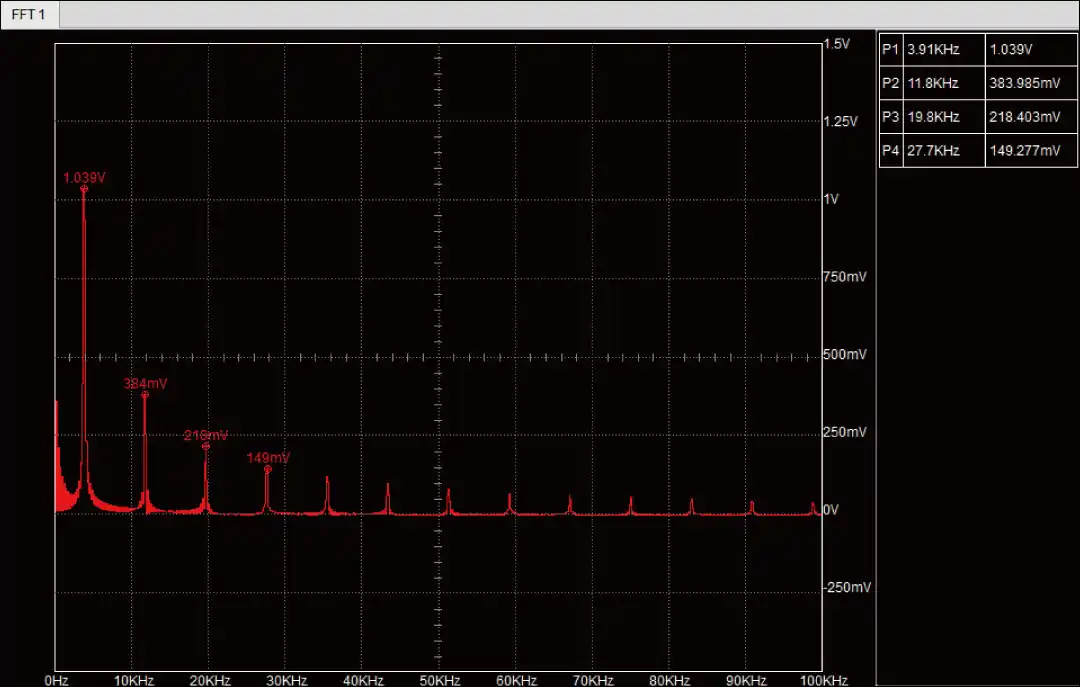
Vertical Offset & Zone View
Voltage division from 2mV/Div – 10V/Div combined with the channel independent Vertical Offset settings, which can be used for glitch measurement and analysis on DC power, and observing the ripple and overshooting voltage on DC offseted voltage. It is also possible to use 16Bit high vertical resolution mode (TS3124H/V) with the Zone View feature to observe the DC voltage and ripple signal together in the same time.
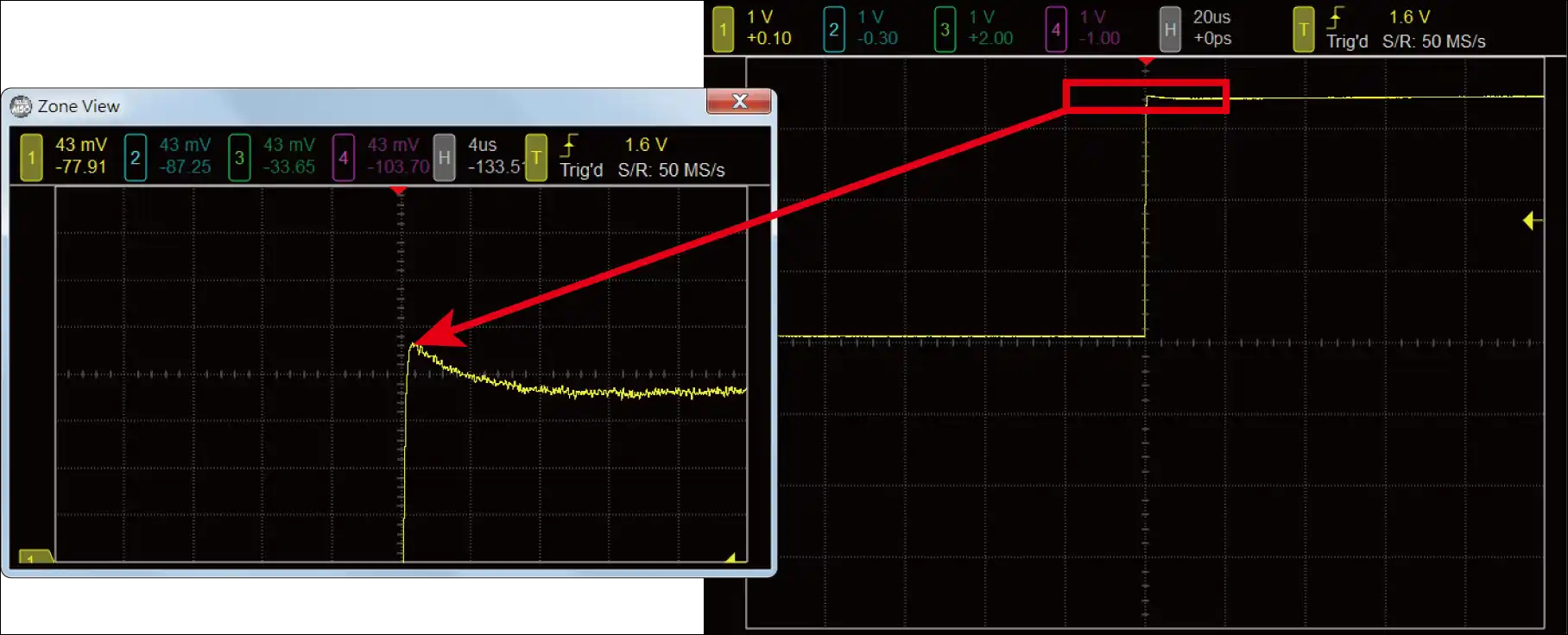
Digital Voltmeter, DVM
Provides voltage root-mean-square, voltage average and frequency counter function for the selected channel.
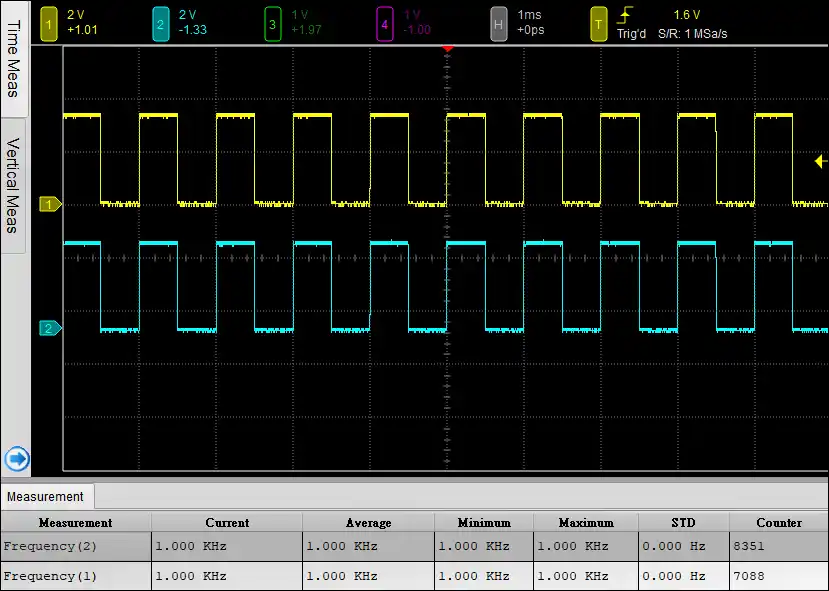
Measure 1 KHz, 2.5 Vpp square waveforms by the measurement function.
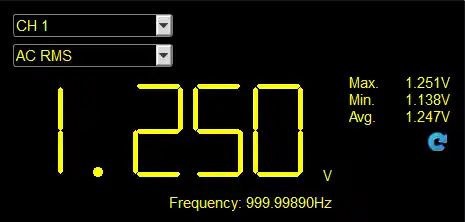
Measure 1 KHz, 2.5 Vpp square waveforms by the DVM function.
Measurement
More than 20 types of waveform measurements with customized threshold settings features, provides real-time update for vertical, time and channel to channel timing measurements with statistic features.
Time:Frequency, Period, ±Duty, ±Period, Rise/Fall Time, Delay, Phase
Vertical:VMax, VMin, VHigh, VLow, Vpp, VAmp, VMid, VMean, VRMS, ±Overshoot, Rise/Fall Preshoot
Counter:Edge Count, ±Pulse Count
Math:Add, Subtract, Multiple, Divide, XY, Absolute, Square Root, LogA, LnA, Exponential, Integral
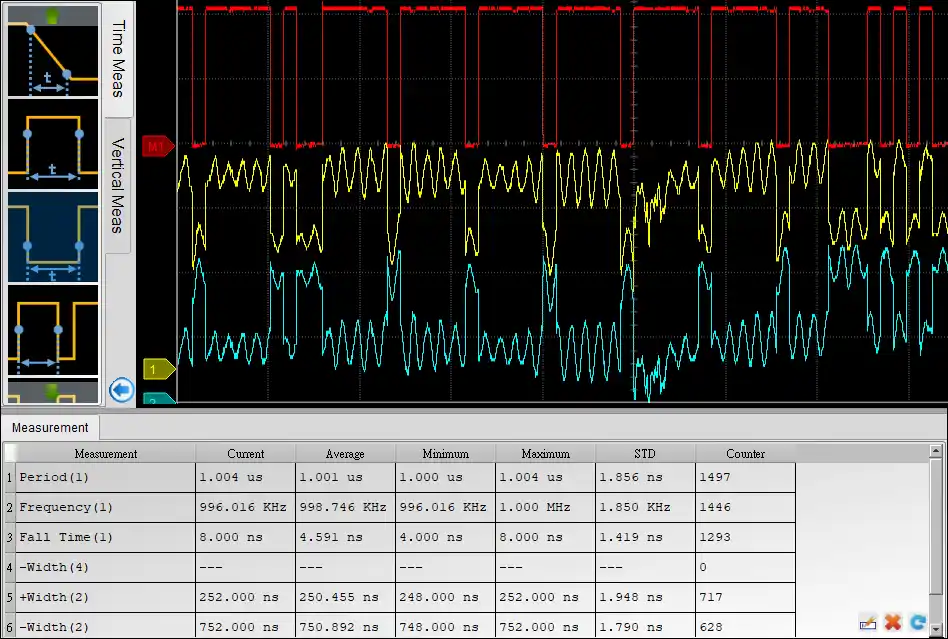
| DSO Spec. | |
|---|---|
| Power Source | USB bus-power (+5V) |
| Static Power Consumption | 4.5W |
| Max Power Consumption | 7.7W |
| Acquisition Mode | Sample, Average, Envelope[*], Peak detect[*], High resolution |
| 8 bits Sampling [Record length] | 1 Ch @ 1 GS/s [512 Mpts]; 2 Ch @ 500 MS/s [256 Mpts]; 4 Ch @ 250 MS/s [128 Mpts] |
| ≧12 bits Sampling [Record length] | 1 Ch @ 500 MS/s [512 Mpts]; 2 Ch @ 250 MS/s [256 Mpts]; 4 Ch @ 125 MS/s [64 Mpts] |
| ≧14 bits Sampling [Record length] | 1 Ch @ 100 MS/s [256 Mpts]; 2 Ch @ 100 MS/s [128 Mpts]; 4 Ch @ 100 MS/s [64 Mpts] |
| Input Channels | 4 |
| Input Coupling | AC/DC |
| Input Impedance | 1 MΩ ∥ <19 pF |
| Overvoltage Protection | ± 100 V (DC+AC peak) |
| Ch-Ch Isolation | 50dB @DC to 100MHz; 40dB @ 100MHz to 200MHz |
| Ch-Ch Skew | 100 ps between two channels with the same scale & coupling settings |
| Bandwidth | 200 MHz |
| Rise Time | 1.75 ns @ 200 MHz; 3.5 ns @ 100 MHz; 7 ns @ 50 MHz |
| Resolution | 8, 12, 14, 15, 16 bits |
| Input Sensitivity | 2 mV/div to 10 V/div |
| Offset Range | ±150 V @ 2, 5, 10 V/div; ±15 V @ 0.2, 0.5, 1 V/div; ±1.5 V @ 2, 5, 10, 20, 50, 100 mV/div |
| DC Accuracy | ±3% of Full-Scale |
| Bandwidth Limit | 20 MHz, 100 MHz or Full |
| Protocol Trigger / Decode | BiSS-C, CAN 2.0B/CAN FD, DALI, DP_Aux, HID over I2C, I2C, I2S, LIN2.2, MDIO, Mini/Micro LED, MIPI I3C 1.1, MIPI RFFE 3, MIPI SPMI 2, Modbus, PMBus, ProfiBus, SENT, SMBus, SPI, SVI2, UART, USB PD 3, USB1.1 |
| Electrical Validation (Protocol) | N/A |
| Cascade | 16 Ch |

